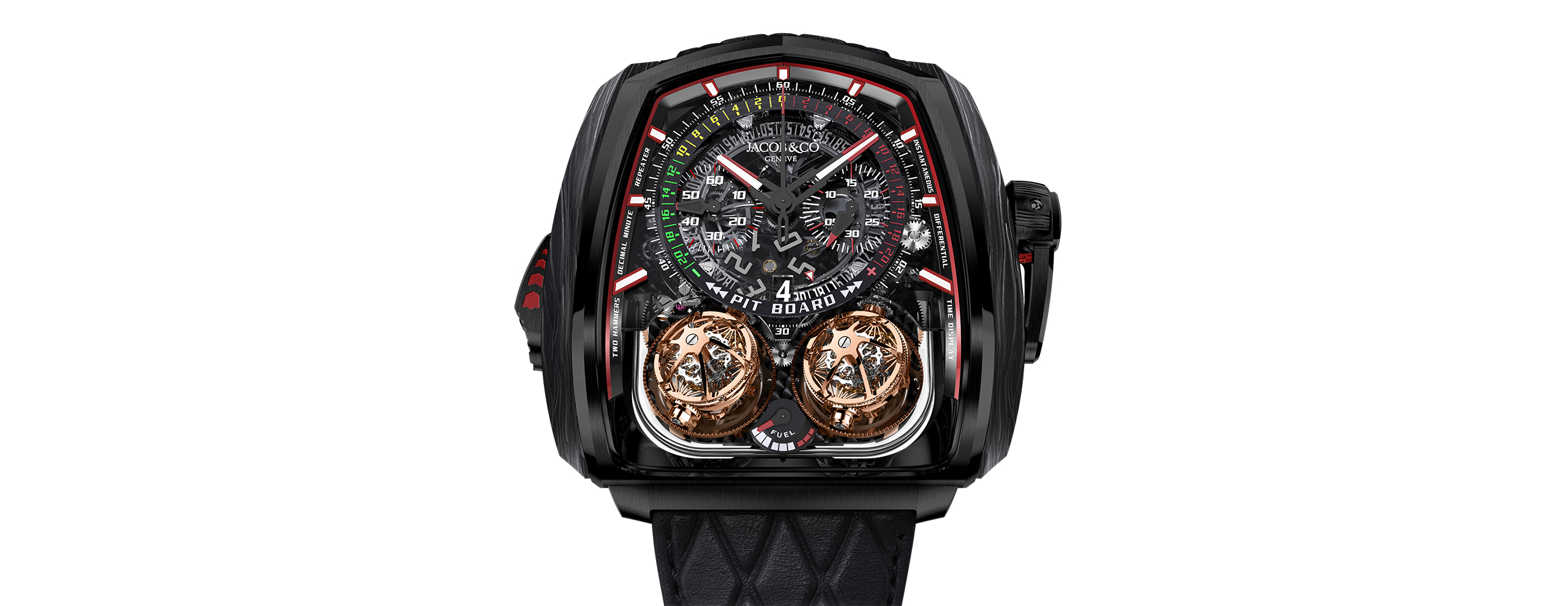A closer look at the technical virtuosity behind one of the most electrifying grand complications in modern times.
Jacob & Co. has played a serious game in pushing complications in fantastical, larger-than-life directions ever since it set foot in mechanical watchmaking with the Quenttin Tourbillon in 2006. The brand engages in a kind of watchmaking where mechanics are reimagined and interpreted to
create maximum visual impact, generating, at times,
significant entertainment value. Today, Jacob & Co. is best known for the Astronomia, a series of wrist-mounted amphitheaters that find myriad ways of capturing the heavens above. But, the Twin Turbo Furious was the vehicle in which the company first applied its conceptual, maximalist streak to traditional grand complications, and the result is something that is without direct comparison in watchmaking, despite it being visually and spiritually reminiscent of the sort of high-octane, high-risk watchmaking that took root in the early 2000s.

Quenttin Vertical Tourbillon
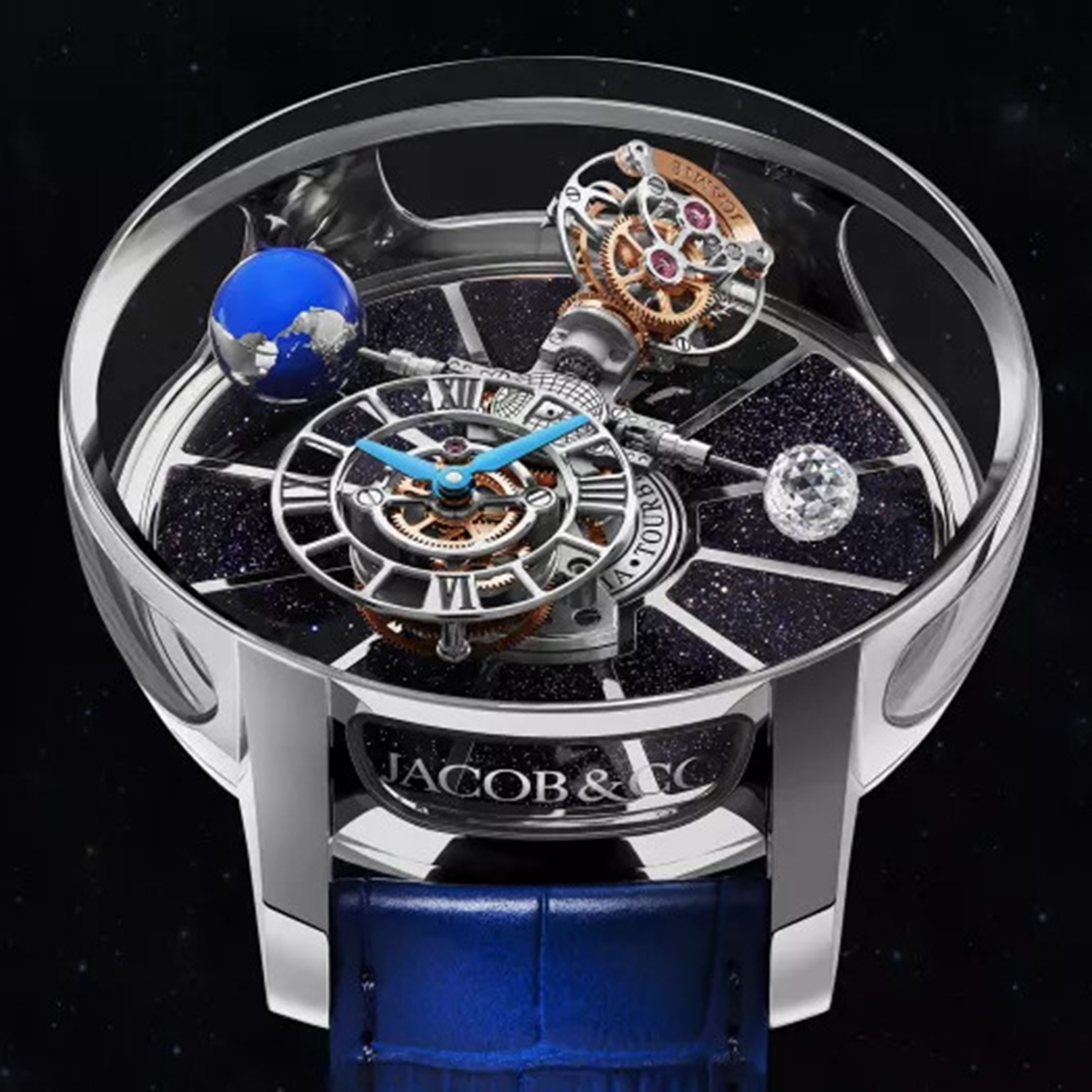
Astronomia Tourbillon White Gold
Launched in 2018, the Twin Turbo Furious is nominally a minute repeater with a chronograph and double toubillons. However, each complication is of an exotic variety. The minute repeater chimes the time digitally, making it a decimal minute repeater. The chronograph is a single-pusher chronograph with a reference time differential indication, and lastly, the pair of tourbillons are flying, triple-axis and high-speed. Conceived by Le Cercle des Horlogers, the movement was masterfully constructed to accommodate the radically executed, wedge-shaped case, and as a result, has a highly unusual architecture that is worth a deeper dive.
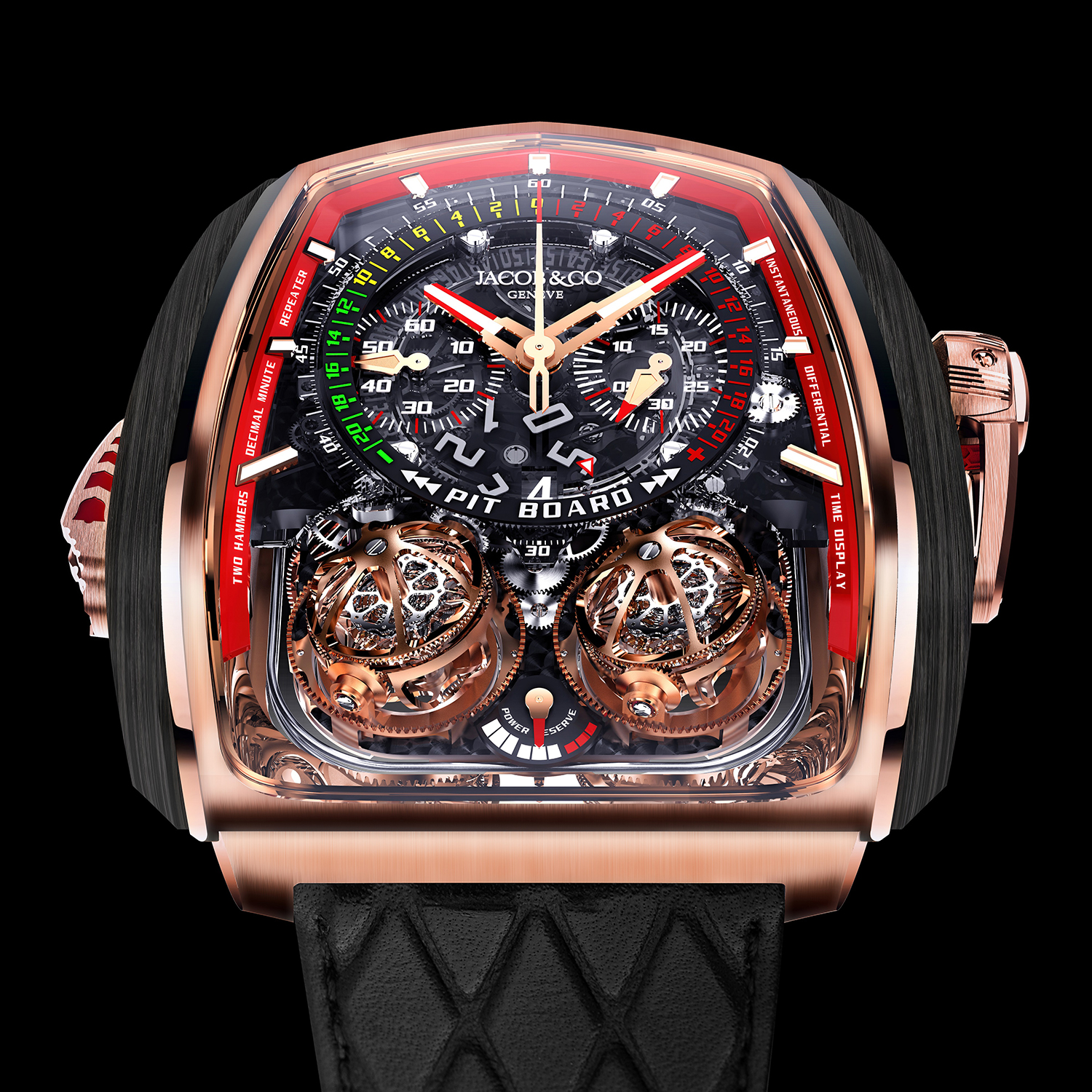
Jacob & Co. Twin Turbo Furious, 2018
Twin Flying Triple-Axis Tourbillon
Since the advent of the 21st century when the resurgence of interest in mechanical horology sparked the rebirth of the tourbillon, tourbillons and all its exotic descendants have grown more prevalent. Double tourbillons — in the strictest sense, with two balances and escapements — alone, have been accomplished by a handful of brands as diverse as Greubel Forsey, Roger Dubuis and Cecil Purnell.
However, the basic principle of the Jacob & Co. Twin Turbo Furious differs slightly from every other known configuration and for which a patent was issued. In a standard double tourbillon watch, both tourbillons are driven by a single barrel and gear train, along which a differential splits power to each tourbillon while averaging out their errors in rate to produce a single averaged deviation. However, visible on the back in the Twin Turbo Furious, each tourbillon is actually driven by its own gear train and mainspring barrel, arranged linearly in a parallel configuration with their respective third wheels sporting an intricate, skeletonized pattern.
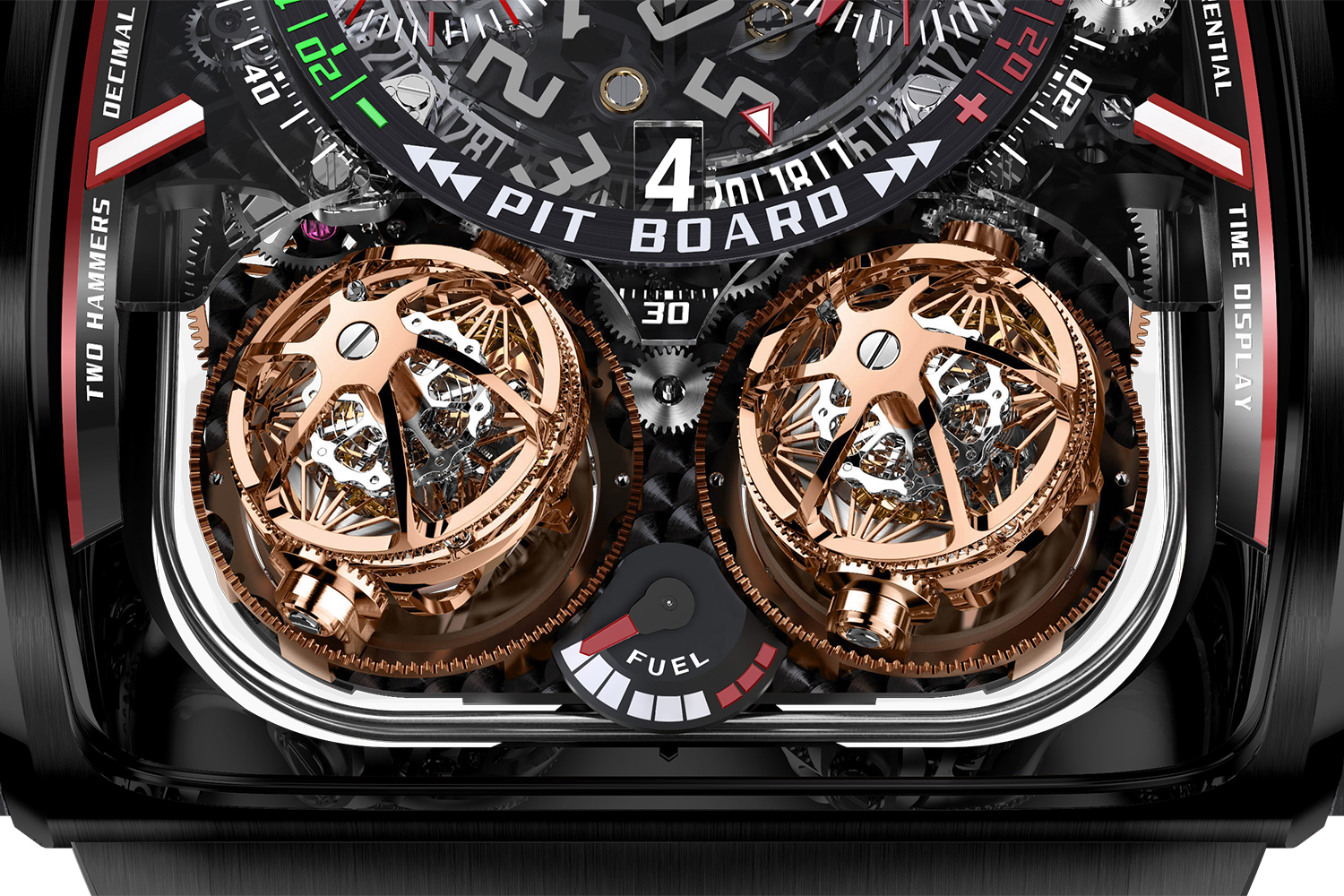
Twin Flying Triple-Axis Tourbillon
As such, a differential cannot be applied to such a design. Instead, both tourbillons are mechanically coupled by means of a friction clutch. Hence, one regulating organ is able to influence the rate of the other directly so as to oscillate at the same frequency, thereby averaging their errors in rate. In so doing, each oscillator becomes less susceptible to errors as compared to one operating in isolation. Both wheels in the clutch are only driven together by friction when the rate of one oscillator varies from the other. Each barrel offers a power reserve of 50 hours, with both unwinding at the same time and speed. Meanwhile, the hands are indirectly driven by the gear train without the chronograph. In other words, the timekeeping gear train is isolated from the chronograph to maintain accuracy when the chronograph is in use. The solution of providing each triple-axis tourbillon with its own energy source, as opposed to having a single mainspring drive two parasitical mechanisms — three, including the chronograph — also helps the watch maintain a respectable power reserve. Both barrels are wound via an unusual crank handle with the crown in the neutral position.
The case of the Twin Turbo Furious is topped by a dramatically curved sapphire crystal that widens and rises at the base to accommodate the three-dimensional extravaganza of the tourbillons, with a power-reserve display situated in between them. As opposed to a traditional tourbillon that rotates on a single axis to compensate for errors in rate in all possible vertical positions, the triple-axis tourbillon rotates simultaneously across three different axes. The combined axis of the three cages results in the escapement being rotated in a seemingly random orbit, which exposes the balance wheel to a greater variety, if not almost all positions and averages its timing errors. The spectacle is enhanced by the speeds at which each tourbillon cage is made to rotate. Beginning with the innermost cage, each of them completes a revolution in 24 seconds, eight seconds and 30 seconds respectively. Collectively, the three cages will return to their original positions after 120 seconds — the lowest common multiple of the periods of each cage.
The carriages in later versions of the Twin Turbo Furious would be geared to run at a comparatively languid and fluid pace of 24, 48 and 180 seconds respectively per revolution, allowing their intricacy to be better admired.
Chronograph with Reference Time Differential
At the same time, the massive skeletonized third wheel in the gear train to the right when viewed from the back, also meshes with the pinion of the drive wheel of the chronograph — although in later versions, a separate, smaller wheel is superimposed on the third wheel to drive the tourbillon.
The chronograph relies on a classic horizontal coupling system that is visible right at the heart of the movement. The clutch lever that connects the drive wheel to the chronograph wheel is remarkably long and made up of just a single piece with an intricate skeletonized form. It goes between the chronograph seconds wheel and the strike train above before extending downwards over the clutch wheel. This unique arrangement of gears allows the chronograph seconds wheel, minutes wheel and driving wheel to be supported by the same bridge, which is shaped like an arrowhead to maintain an overall symmetry in movement design.
Most unusually, the chronograph is connected to a reference time differential indicator. It was inspired by pit board timekeeping panels once used in motor racing to communicate the difference between the reference lap time and actual lap time to drivers. The reference time is set via the crown in the first position and displayed in two adjacent apertures at six o’clock on the dial. The larger digit shows the minutes, and the aperture to its right indicates the seconds.
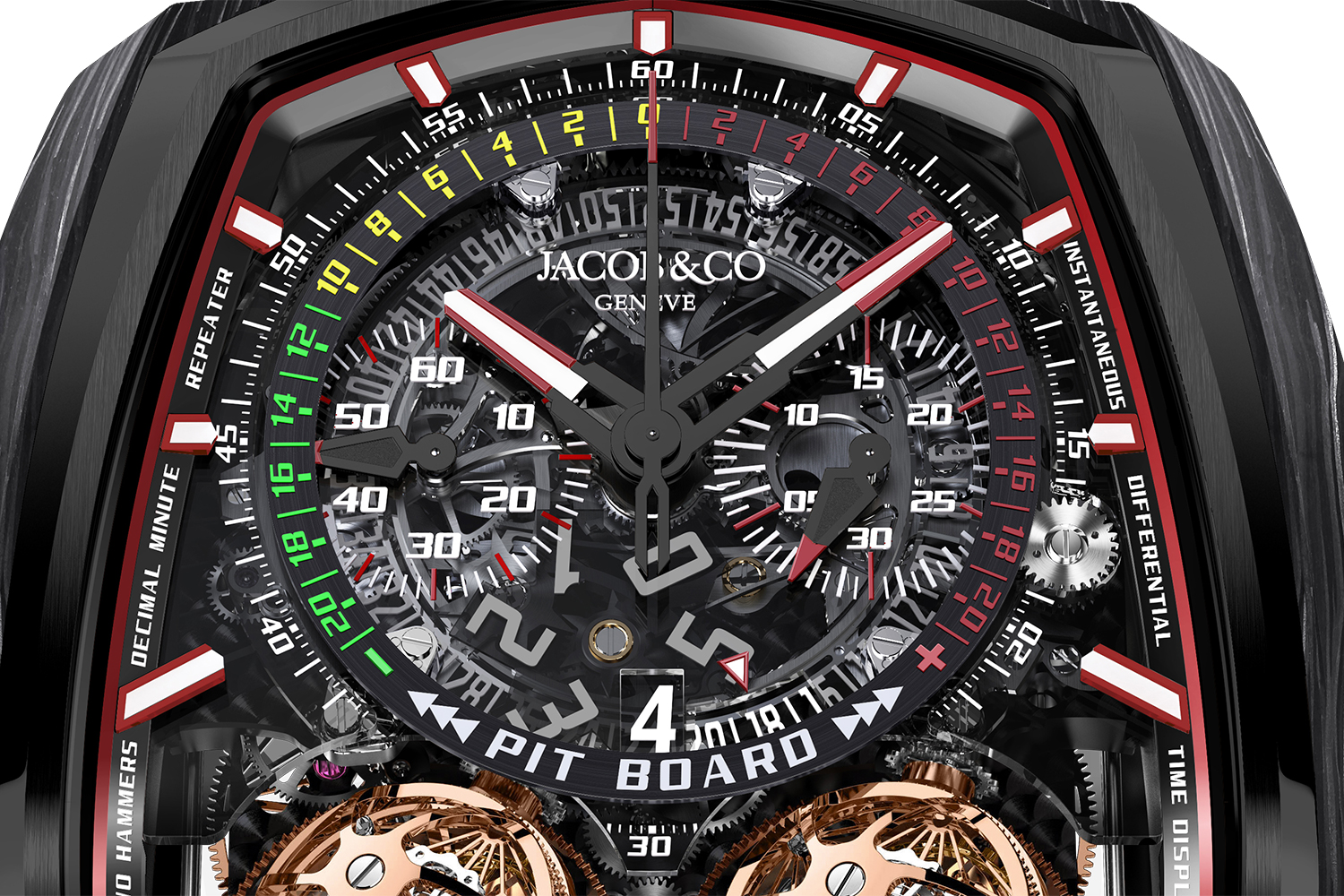
The chronograph relies on a classic horizontal coupling system
Once the chronograph is started and stopped, the chronograph hand then indicates the time difference between the recorded time and the reference time on the rotating “pit board” wheel. A positive difference is shown with red numerals on the wheel, while a negative difference is in yellow.
The third complication is a decimal minute repeater, a modern take on the traditional repeater that is rather apt for such a progressive timepiece. First introduced by Kari Voutilainen in 2005, a decimal minute repeater is a more intuitive acoustic system that chimes the minutes in units of tens and ones after the hours instead of sounding the quarters and minutes.
Visible at 12 o’clock at the back of the watch is the repeating barrel that is flanked by hammers that pivot on staffs. The larger hammer on the right hits a low-pitch gong for the hours while the smaller hammer hits a low-pitch gong for the minutes. When the slide on the left side of the case is pushed, it charges a small spring within the repeater barrel, and when released, energy is dissipated to power the strike train. Visible at the end of the strike train is a governor, which has two arms that spread out to control the speed at which the spring unwinds, hence setting the tempo of the chimes.
As with most chiming watches, the snail cams and their respective racks that are responsible for translating the motion of the hands to sound, is located on the dial side and thus can’t be seen. The snail cams are connected to the motion works on the dial side, while part of the hour rack projects from the caseband and fits into the slide. And as is the case with all minute repeating watches, the strike train and the main gear train in the watch are by no means directly connected, even if it appears to be otherwise from the caseback.
The shape and voluminous size of the case, along with the expansive sapphire crystal, ensure that the gongs have more to work with in terms of surfaces to amplify and enrich the sound. Thus, it is a chiming watch that truly delivers even if its sonic and chronometric performance is peripheral to its sheer audacity and entertainment value.
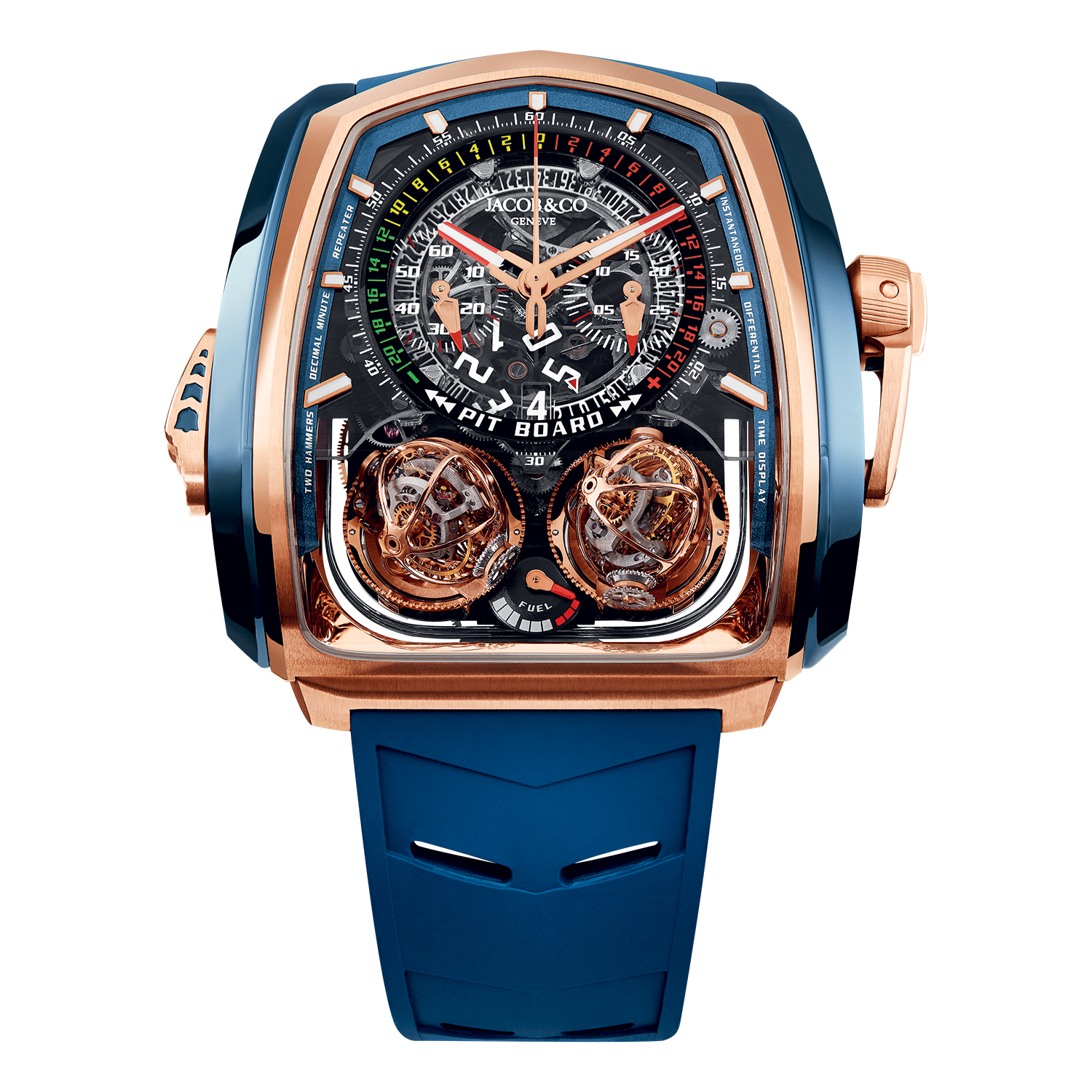
Jacob & Co. Twin Turbo Furious in rose gold and blue titanium
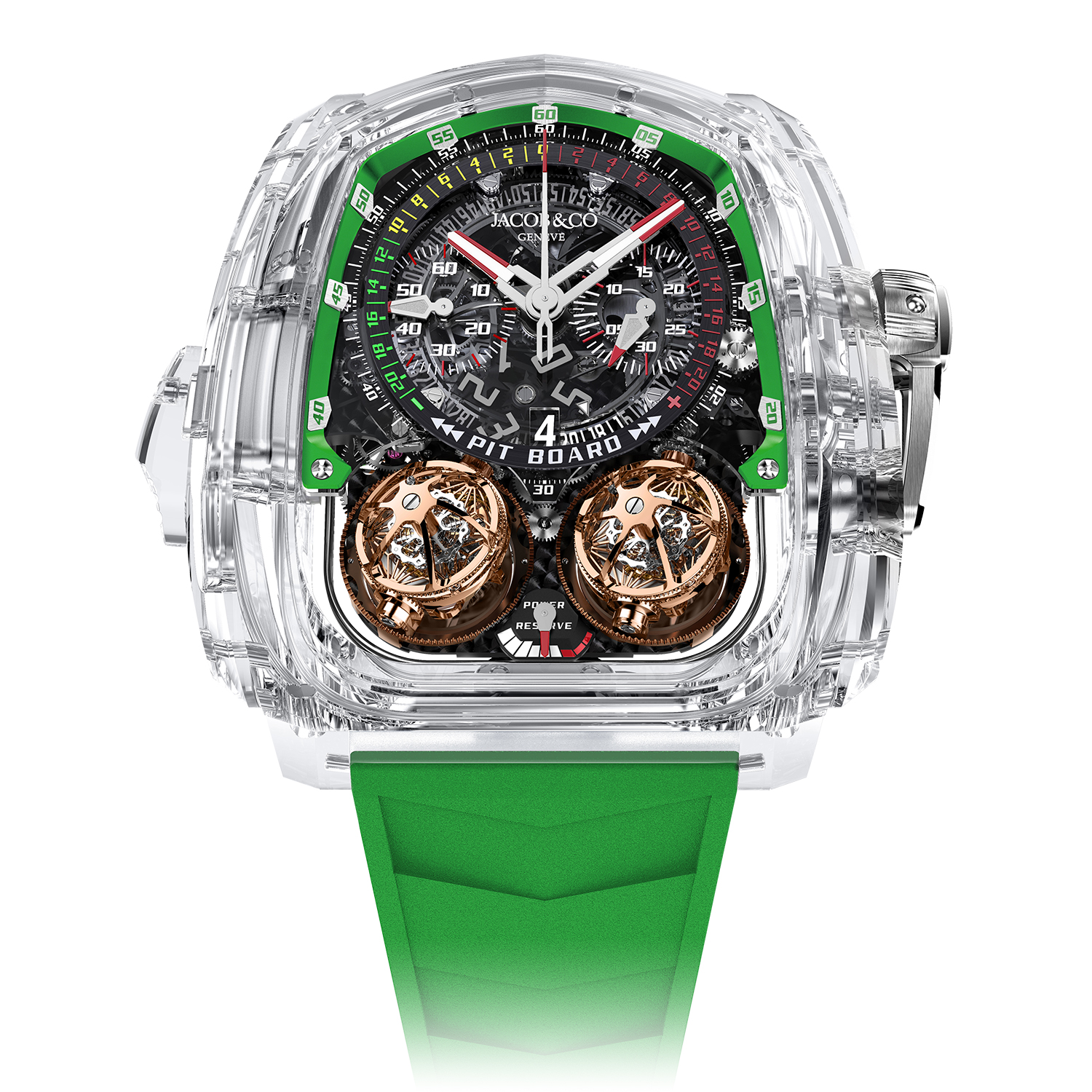
The Twin Turbo Furious Sapphire
Various iterations of the watch have since been released with the most memorable being the fearsomely beautiful Twin Turbo Furious Bugatti La Montre Noire which featured a black gold case that was completely covered in black baguette-cut sapphires, and the Twin Turbo Furious Sapphire Crystal which puts the entire movement on show.
Without a doubt, the Twin Turbo’s shrill showmanship and aggressive design are intended to astound, but it will prove equally intellectually rewarding to those who search beyond this instant of theatricality.
The Twin Turbo Furious finds no immediate equivalent in watchmaking. Tourbillon chronographs are rather rare to start with, despite each being a relatively common complication on its own. And there are a few reasons for this. A tourbillon is driven on a fixed fourth wheel, doubling as a seconds indicator, while a chronograph is driven off the fourth wheel, which itself displays the running seconds, thereby necessitating solutions in gear arrangement that are less than straightforward. They are also limiting in terms of design, with the most obvious and intuitive configuration being a bi-compax layout with a tourbillon at six o’clock, which at the same time is not plain as day to achieve due the previous reason. But most of all, it demands considerable mastery in energy management. Apart from this, the Twin Turbo Furious adds a decimal minute repeater and a second tourbillon, which very unusually has its own gear train and barrel and is linked to the first via a coupling system. Each complication is rare and unusual in and of itself, which makes the watch even more unique as a whole, and equally so in the way they are amalgamated.
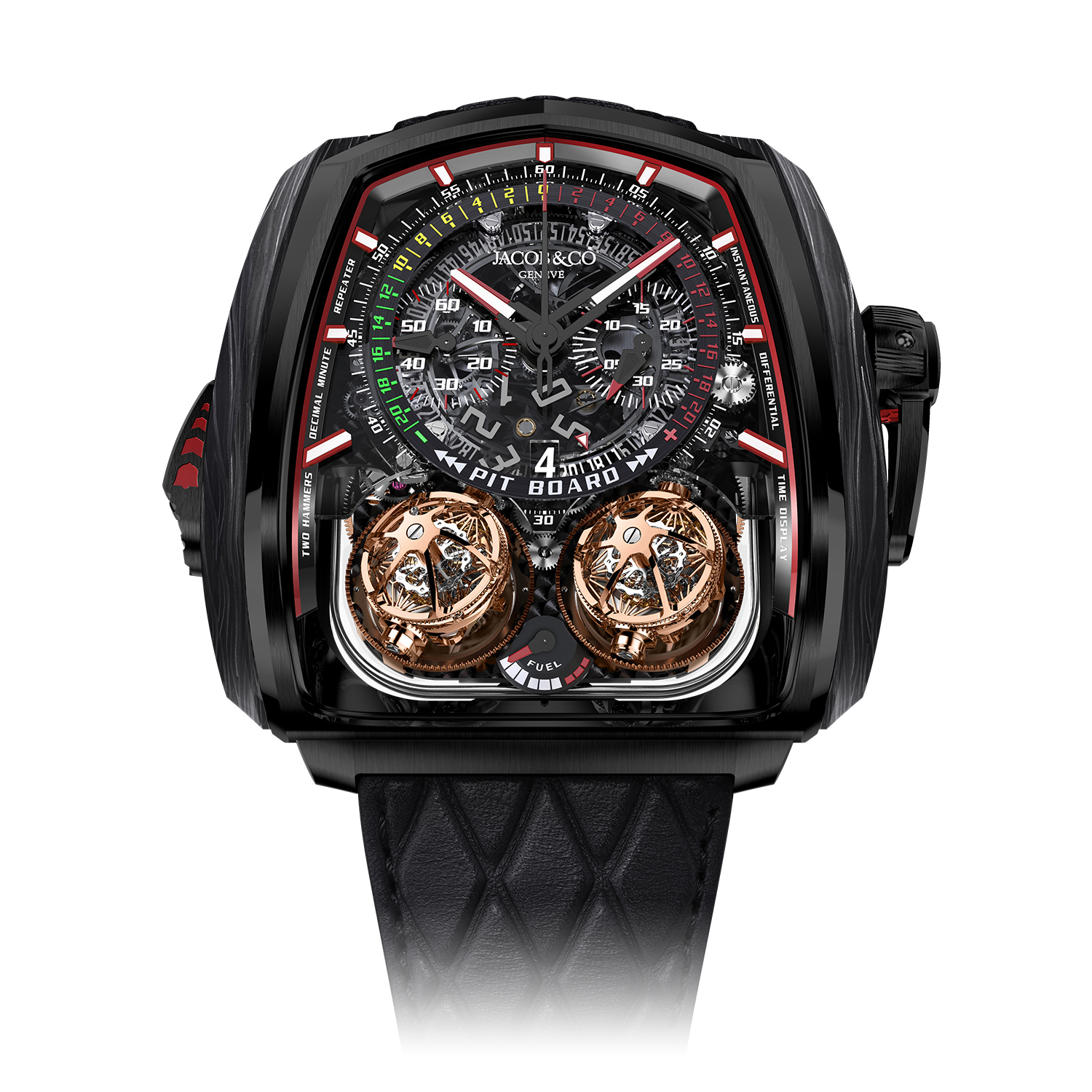
Jacob & Co. Twin Turbo Furious Black
With a starting price of USD 550,000 for the version with a black DLC titanium and forged carbon case, the Twin Turbo Furious packs a whole lot of punch for the money.












